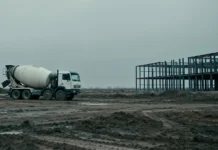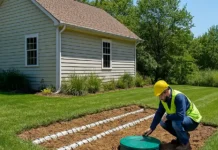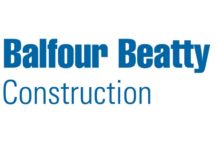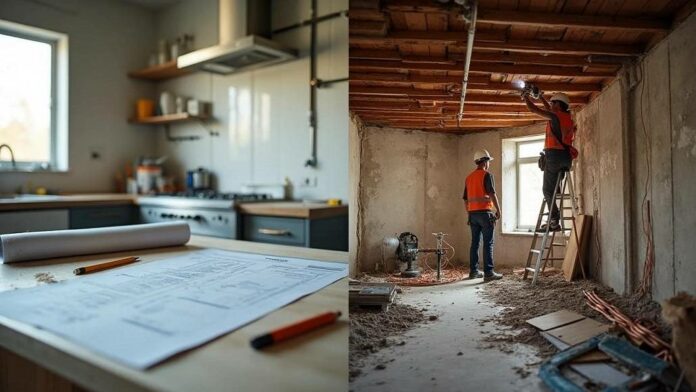Even with a well-planned renovation timeline, unexpected delays and budget overruns are common. The excitement of remodeling often takes center stage—designing open kitchens, selecting stylish bathroom tiles, and upgrading lighting. But in regions with difficult weather conditions like heavy fog, salty air, or damp winters, underlying issues become even more critical.
Many homeowners overlook essential systems such as roofing, foundations, and outdated wiring. These hidden components rarely get attention because they aren’t part of our daily routine. Yet ignoring them often leads to costly setbacks.
To stay on track, it’s wise to set aside an additional 15 to 20 percent of your total budget. Renovation work almost always extends beyond the original timeline. That’s because most people focus on the visible improvements—new cabinets, fresh paint, updated floors—while the structural and functional details get missed.
This article offers expert advice on how to build a smarter, more resilient renovation plan. By focusing on the elements that are typically ignored, you’ll reduce stress, avoid costly surprises, and keep your project running more smoothly from start to finish.
Set Clear Goals Before You Start
Starting a home renovation without clear goals is like sailing without knowing where you’re headed. You need to set clear goals before you pick up any hammers or tear down walls.
Define your renovation priorities
Setting priorities early helps you make key decisions throughout your renovation. Start by grouping your project into three priority buckets:
- Need to have – must-have elements that make the project worthwhile
- Want to have – features you’d love if your budget allows
- Wish to have – extras you can skip if they cost too much
You should also think about your budget in similar terms: what you’d like to spend, the most you’re willing to spend, and the absolute maximum you can spend. This approach really helps when you need to make tough calls about where your money goes.
Decide what success looks like
Success means something different to every homeowner. Are you renovating to make your space work better, look better, or sell for more? A clear picture of what success means to you will keep you focused throughout the project.
You might want to set specific ways to measure your renovation’s success. This could include how happy you are with the results, how long it took, or how well you stuck to your budget. Clear success markers help you track progress and make changes when needed.
Create a realistic renovation timeline
A realistic timeline helps manage expectations and keeps stress levels down. Kitchen remodels usually take 2-5 months, while bathroom updates need 1-3 months. Knowing these timeframes helps set the right expectations from day one.
Make sure to build some wiggle room into your schedule. Most experts say you should add 20-30% extra time for unexpected delays. You should also think about upcoming holidays or events when you need your home ready, then plan backward with delays in mind.
Keep in mind that rushing or planning with tight deadlines often brings frustration, extra costs, and sleepless nights. Smart timeline planning saves both time and money throughout your renovation trip.
Build Flexibility Into Your Timeline
The best-laid renovation plans can run into unexpected roadblocks. A flexible approach isn’t just helpful—you need it to plan your renovation timeline successfully.
Account for permit delays and inspections
The permit process often throws timelines off track. Getting approvals takes anywhere from weeks to months based on your project’s complexity. Local municipal offices deal with backlogs and staff shortages. They might also have specific requirements that stretch waiting periods.
My advice? Start your permit applications early. Working with experienced contractors helps you direct this process quickly. Cities tend to speed up applications from professionals who have a history of following codes. Any plan changes mean you’ll need to submit again. Your application goes back to the end of the line—adding at least 15 business days to your timeline.
Expect material backorders and shipping issues
Supply shortages and delivery holdups can throw a wrench in renovation schedules. These items usually take the longest to arrive:
- Custom cabinets and countertops
- Plumbing fixtures, especially those made overseas
- Specialty tile and flooring
- Appliances and lighting fixtures
Bathroom and kitchen remodels face the biggest supply chain problems because they need so many different materials. You can reduce these challenges by ordering critical materials right away. On top of that, it helps to stay flexible with material choices—switching to a different tile might save you weeks of waiting.
Plan for weather or labor-related delays
Bad weather can stop construction dead in its tracks, especially outdoor work. Rain puts a halt to exterior painting and concrete work. Extreme temperatures create dangerous conditions. Finding skilled workers has become harder too, since the construction industry doesn’t have enough qualified professionals.
Experts ended up suggesting a 20-30% time buffer in renovation timelines for these delays that always seem to pop up. This extra padding turns stressful disruptions into manageable hiccups. My tip? Keep an adjustment log to track changes. You can document delays, update deadlines, and note why timelines shifted.
Being flexible with your renovation schedule doesn’t mean letting delays run wild. It means you’re ready for the common challenges that show up in almost every home improvement project.
Don’t Skip the Hidden Work
Your home’s hidden features can create the most significant renovation challenges. Most homeowners only think about visible improvements. They later find issues that can get pricey and throw their renovation schedule off track.
Check electrical and plumbing systems early
Outdated electrical and plumbing systems hide behind walls and beneath floors. These systems cause major renovation delays. Start by checking your electrical panel. Homes built before 1990 lack the power capacity needed for today’s appliances and tech. Older homes with aluminum wiring or knob-and-tube systems need full rewiring. This adds 2-3 weeks to your renovation schedule.
Your plumbing needs the same attention. Homes over 50 years old often have cast iron pipes with hidden rust that shows up only after opening walls. Getting a complete plumbing and electrical check before setting your renovation timeline helps avoid these surprises.
Use private utility locating to avoid underground surprises
Underground utilities hide dangers that can disrupt your timeline. Free utility marking services from municipalities only show public utilities and miss private lines. That’s why many homeowners turn to specialized services like private utility locating in Arizona, which use ground-penetrating radar to detect what others miss.
These professionals can identify:
- Buried electrical lines to outbuildings
- Propane or natural gas pipes
- Irrigation systems
- Septic components
- Abandoned fuel tanks
Finding unmarked utilities during construction can stop work for days or even weeks while teams figure out safe solutions. You can avoid these delays entirely by scheduling proper utility location checks before any digging or structural work begins.
Get a foundation and drainage check
Foundation problems rank among the most expensive and time-consuming renovation complications. Cracks bigger than 1/4 inch, uneven floors, or doors that stick point to possible structural issues.
Good drainage plays a vital role too. Water damage leads to about 30% of renovation delays. Watch your property during rainfall to spot water pooling near the foundation. Early drainage fixes prevent moisture from damaging your new materials.
Adding these hidden elements to your renovation planning creates a realistic project schedule. This approach considers your home’s full needs beyond just surface improvements.
Inspect the Roof Before You Wrap Up
Roof problems can get pricey when they show up after renovation projects are done. Your renovation timeline planning needs a full roof inspection as a vital final step. It’s a good idea to bring in experienced professionals, such as Mclean VA roofing contractors, who can identify issues before they escalate and ensure everything is in solid condition before the project closes.
Roofing problems can delay move-in and add to long-term costs
Skipping a roof check can turn your finished renovation into a longer project with surprise costs. Undetected roof leaks cause water damage that guides structural decay, mold growth, and insulation problems. These issues drive up costs over time. Moisture from roof damage helps mold, dust mites, and fungi thrive. These create health risks for people living in the home.
Professional inspections after renovations are worth every penny. They protect your newly renovated spaces and help with insurance claims if weather damage happens later. Schedule a follow-up inspection within a few weeks of any major renovation. This will give a clear picture of how everything is settling and fix small issues before they grow.
Look for signs of wear, leaks, or structural issues
Your roof needs checking for these warning signs:
- Missing or damaged shingles: Watch for bare spots, lifted edges, or cracked shingles that let water seep in
- Water stains: Yellow or brown spots on ceilings or walls usually mean a roof leak
- Sagging roofline: Dips, curves, or visible sagging need quick attention to prevent cave-ins
- Granule loss: Look in gutters for shingle granules that look like coarse sand
- Light penetration: Visible light in your attic points to missing or damaged shingles
Ground-level checks give you a good start, but some critical signs need expert eyes. Hairline cracks in flashing and subtle shingle damage require professional assessment. Roof experts make sure all parts meet design specs and work right in normal weather.
This final inspection step will give you a structurally sound home that protects you and brings peace of mind for years to come.
Conclusion
A successful home renovation isn’t just about finishes and fixtures—it’s about planning for the parts you don’t see and leaving room for the unexpected. From setting clear goals to building flexibility into your schedule, every step matters. Paying attention to hidden systems like wiring, plumbing, and underground utilities can save you from major delays. And wrapping up with a thorough roof inspection ensures your home is truly ready for long-term living.
By approaching your renovation timeline with patience, foresight, and a clear structure, you’ll avoid costly setbacks and enjoy a smoother, more rewarding experience. Take the time to plan well now, and your future self will thank you for a home that’s beautiful, functional, and built to last.





























